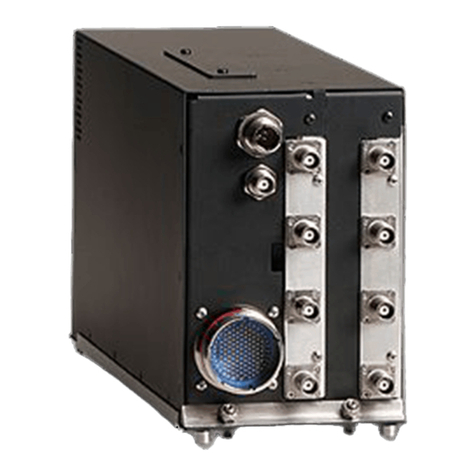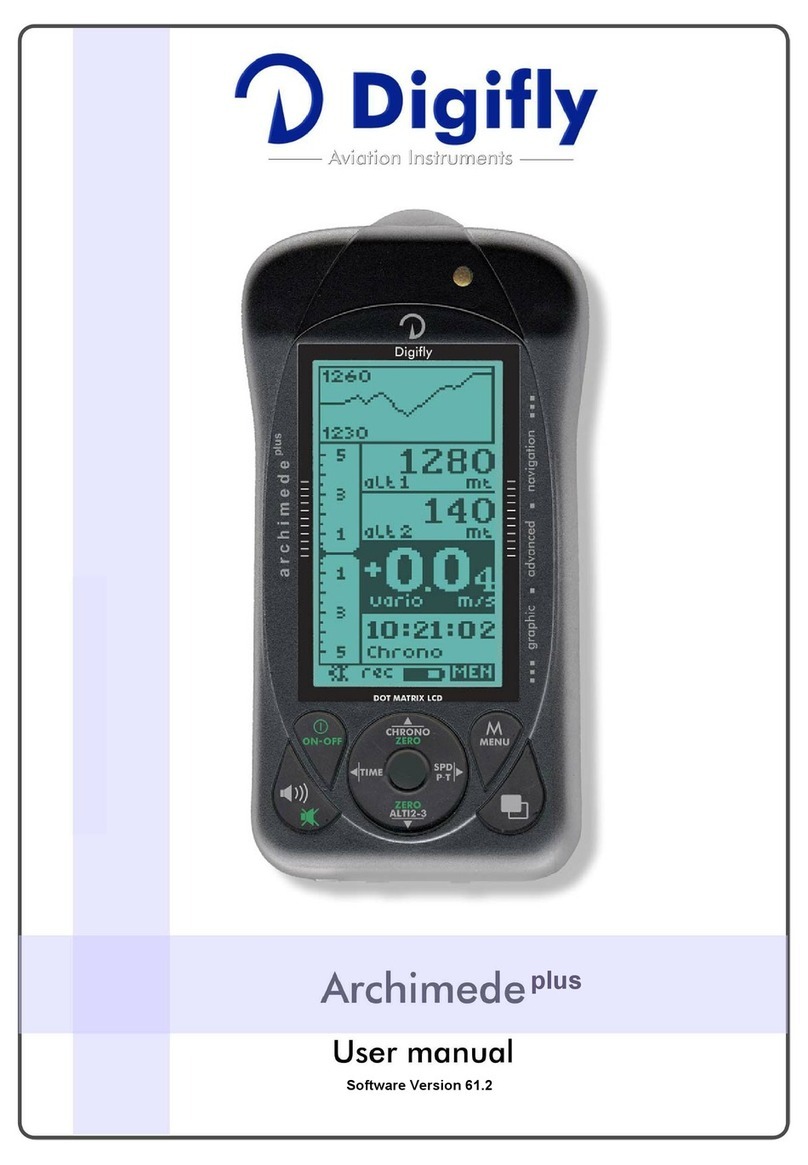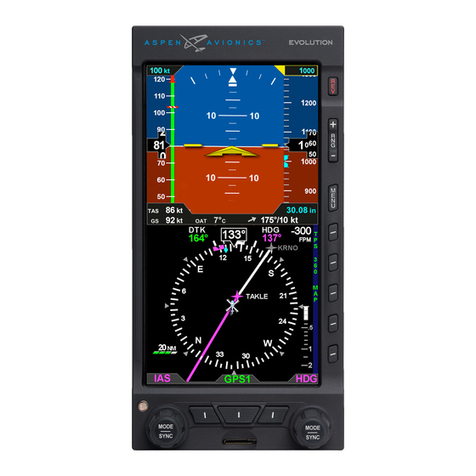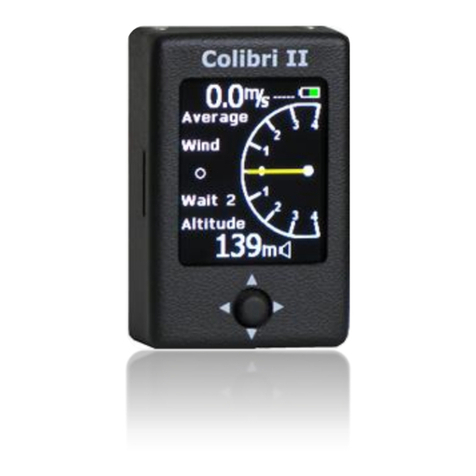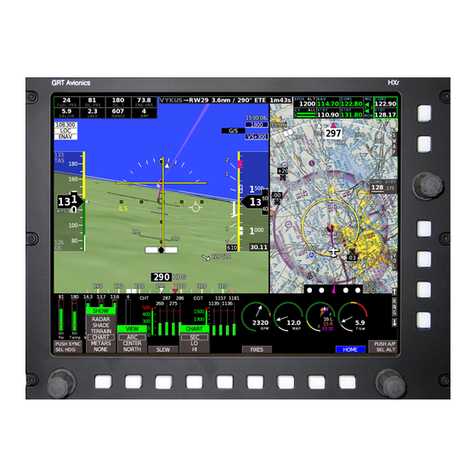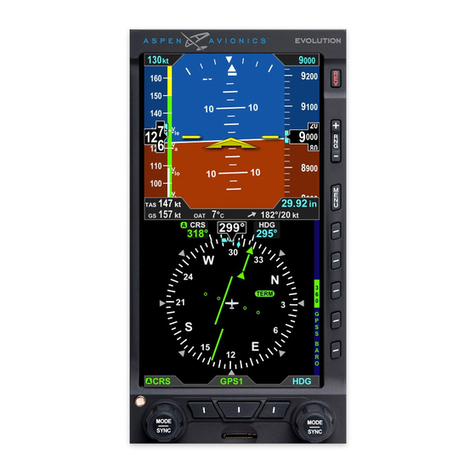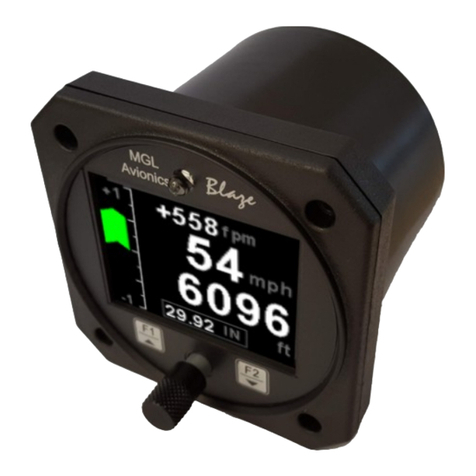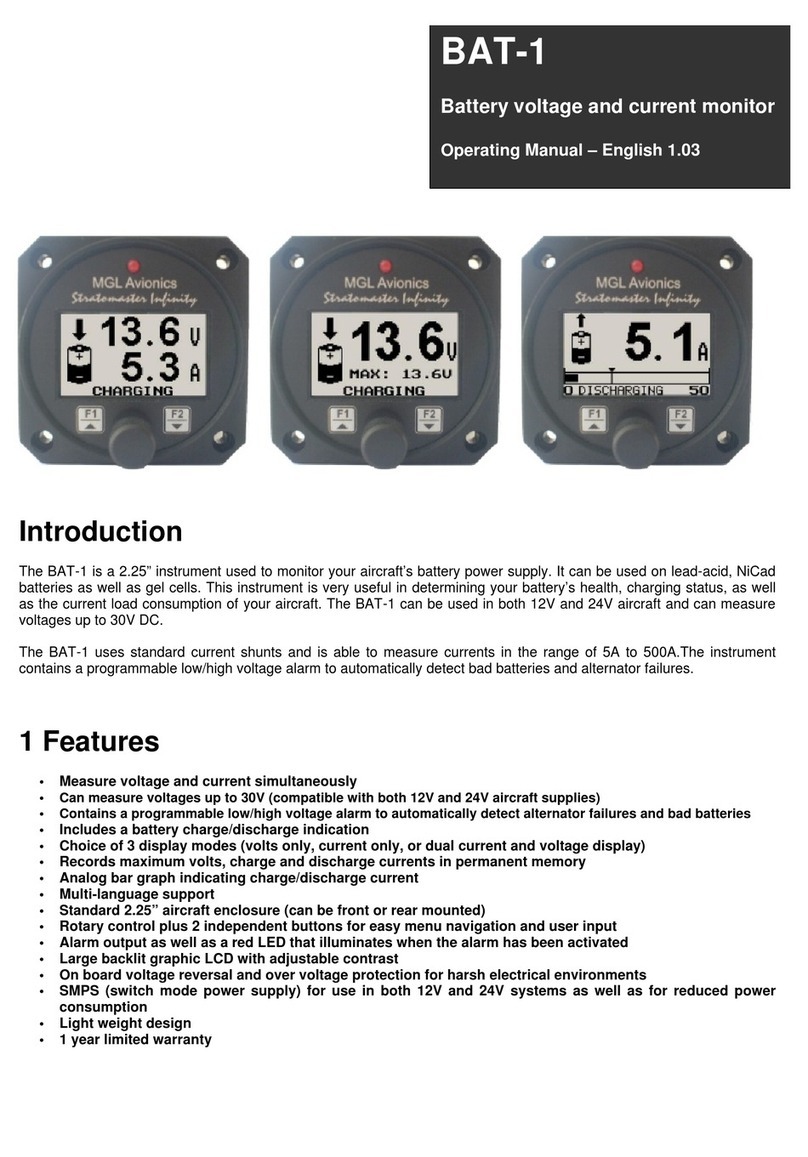Stec ST 360 ALT Owner's manual

Pilot’s Operatin
g
Handbook
SEL ALR
ALT DH VS BARO
ENT

2nd Ed. Jan 15, 08 i
S–TEC
List of Effective Pages * Asterisk indicates pages changed, added, or deleted by
current revision.
Record of Revisions Retain this record in front of handbook. Upon receipt of a
revision, insert changes and complete table below.
Revision Number Revision Date Insertion Date/Initials
1st Ed. Oct 26, 00
2nd Ed. Jan 15, 08

ii 2nd Ed. Jan 15, 08
S–TEC
Page Intentionally Blank

2nd Ed. Jan 15, 08 iii
S–TEC
Table of Contents
Sec. Pg.
1 Overview...........................................................................................................1–1
1.1 DocumentOrganization....................................................................1–3
1.2 Purpose..............................................................................................1–3
1.3 GeneralControlTheory....................................................................1–3
1.4 BlockDiagram....................................................................................1–4
2 Pre-FlightProcedures...................................................................................2–1
2.1 Pre-FlightTest....................................................................................2–3
3 In-FlightProcedures......................................................................................3–1
3.1 Selector/AlerterOperation..............................................................3–3
3.1.1 DataEntry.............................................................................3–3
3.1.2 Barometric(BARO)Calibration.......................................3–3
3.1.3 Altitude(ALT)Select...........................................................3–4
3.1.4 VerticalSpeed(VS)Select.................................................3–5
3.1.5 DecisionHeight (DH) Select............................................3–7
3.1.6 AltitudeAlerter(ALR)Function..........................................3–7
3.1.7 LossofEncodedAltitude..................................................3–8
3.1.8 Selector/Alerter Disconnect............................................3–8
3.2 AutopilotOperation............................................................................3–9
4 OperatingParameters..................................................................................4–1
4.1 Ranges.................................................................................................4–3
5 Glossary...........................................................................................................5–1

iv 2nd Ed. Jan 15, 08
S–TEC
List of Figures
Fig. Pg.
1–1 ST-360ALT/VSSelector /AlerterBlockDiagram......................................1–5
2–1 Selector /Alerter Display,All Segments andAnnunciationsAppear.......2–4
2–2 Selector/Alerter Display, Enter Barometric Correction............................2–4
3–1 Selector/Alerter Display,Loss of EncodedAltitude..................................3–8
List of Tables
Table Pg.
2–1 Pre-FlightTest...............................................................................................2–3

2nd Ed. Jan 15, 08 1-1
S–TEC
SECTION 1
OVERVIEW

1-2 2nd Ed. Jan 15, 08
S–TEC
Page Intentionally Blank

2nd Ed. Jan 15, 08 1-3
S–TEC
1.1 Document Organization
Section 1 Overview
Section 2 Pre-Flight Procedures
Section 3 In-Flight Procedures
Section 4 Operating Parameters
Section 5 Glossary
1.2 Purpose
This Pilot's Operating Handbook (POH) provides Pre-Flight and In-Flight
operating procedures for the S-TEC ST-360 Altitude (ALT) / Vertical Speed (VS)
Selector /Alerter.
Note:
This POH must be carried in the A/C and made available to the pilot at
all times. It can only be used in conjunction with the Federal Aviation
Administration (FAA) approvedAircraft Flight Manual (AFM) orAircraft Flight
Manual Supplement (AFMS). Refer to the applicable AFM or AFMS for
A/C specific information, such as unique ground tests, limitations, and
emergency procedures.
Note:
The Selector / Alerter is a tool provided to aircraft owners, that serves to
assist them with cockpit workload management. The ability of the
Selector / Alerter to provide optimum assistance and performance is
directly proportional to the pilot's knowledge of its operating procedures.
Therefore, it is highly recommended that the pilot develop a thorough
understanding of the Selector / Alerter and its operating procedures in
Visual Meteorological Conditions (VMC), prior to using it under Instrument
Flight Rules (IFR).
1.3 General Control Theory
The Selector / Alerter can be used with the following S-TEC autopilots:
System Fifty Five X
System Sixty Two
System Sixty Five
Pitch Stabilization System (PSS)

1-4 2nd Ed. Jan 15, 08
S–TEC
The Encoding Altimeter / Blind Encoder sends the encoded altitude to the
Selector / Alerter. The encoded altitude must be converted to the true altitude,
through barometric calibration.
The selected altitude and selected vertical speed must be programmed into the
Selector / Alerter. Thereafter, upon engaging the autopilot's vertical speed mode
and arming its altitude hold mode, the aircraft will attain and hold the selected
vertical speed. As the aircraft approaches the selected altitude, a scheduled
reduction in the selected vertical speed will automatically occur. This enables
the aircraft to transition from vertical flight to altitude capture, without adverse
acceleration. Once the selected altitude has been captured, the autopilot's
vertical speed mode will disengage and its altitude hold mode will engage. The
aircraft will then hold the selected altitude.
1.4 Block Diagram
The Selector / Alerter Block Diagram is shown in Fig. 1-1.

2nd Ed. Jan 15, 08 1-5
S–TEC
Fig. 1-1. ST-360 ALT / VS Selector / Alerter Block Diagram

1-6 2nd Ed. Jan 15, 08
S–TEC
Page Intentionally Blank

2nd Ed. Jan 15, 08 2-1
S–TEC
SECTION 2
PRE-FLIGHT PROCEDURES

2-2 2nd Ed. Jan 15, 08
S–TEC
Page Intentionally Blank

2nd Ed. Jan 15, 08 2-3
S–TEC
ACTION RESPONSE
1. Set Battery Master Switch to ON
position. ------
2. Set Avionics Master Switch to ON
position. ------
3. Set Transponder Master Switch to
ON position. ------
4. Set Encoding Altimeter / Blind
Encoder Master Switch to ON
position.
------
5. Set Autopilot Master Switch to ON
position. ------
6. Complete Autopilot Pre-Flight
Procedures contained in respective
POH.
------
7. Set ALT Alerter Master Switch to
ON position. A two-tone audible alert sounds once.
All left numeric segments, all right
polarity / numeric segments, and all
annunciations (ENT, ALT, SEL, ALR,
DH, VS, BARO) appear on Selector /
Alerter display for 5 seconds, as
shown in Fig. 2-1.
Thereafter, only ENT annunciation
and left numeral 29.9 (barometric
pressure in inches mercury) appear,
along with a flashing BARO
annunciation, as shown in Fig. 2-2.
2.1 Pre-Flight Test
Prior to takeoff and with engine running, perform the actions shown in Table 2-1.
For each action, verify the corresponding response where applicable.
Table 2-1. Pre-Flight Test (continued on page 2-4)

2-4 2nd Ed. Jan 15, 08
S–TEC
Fig. 2-1. Selector / Alerter Display, All Segments andAnnunciationsAppear
Fig. 2-2. Selector /Alerter Display, Enter Barometric Correction

2nd Ed. Jan 15, 08 2-5
S–TEC
ACTION RESPONSE
8. Set Altimeter to posted airport
elevation. ------
9. Rotate Selector / Alerter Modifier
Knob as required, until barometric
pressure (inches of mercury) on
display matches that shown on
Kollsman scale of Altimeter.
------
Note:
To convert barometric pressure to
millibars, press Selector / Alerter BAR
switch once.
10. Press Selector / Alerter ALT
switch. ------
11. Rotate Selector / Alerter Modifier
Knob as required, until altitude on left
numeric field of display is 400 feet
above airport elevation.
------
12. Press Selector / Alerter VS
switch. ------
13. Rotate Selector / Alerter Modifier
Knob as required, until vertical speed
polarity on right numeric field of
display is positive (+).
------
14. Press Selector / Alerter ALT
switch. ------
15. Set Heading Bug on DG or HSI
under Lubber Line. ------
Note:
This may not apply to the System
Sixty PSS.
Table 2-1. Pre-Flight Test (continued from page 2-3)

2-6 2nd Ed. Jan 15, 08
S–TEC
ACTION RESPONSE
16. Press Autopilot HDG mode
selector switch to engage heading
mode.
HDG annunciation appears on
Autopilot display.
Note:
This may not apply to the System
Sixty PSS.
17. Press/Hold Autopilot VS mode
selector switch, and then press ALT
mode selector switch to engage
vertical speed mode and arm altitude
hold mode.
ALT and VS annunciations appear on
Autopilot display.
18. Rotate Selector / Alerter Modifier
Knob counter-clockwise (CCW) until
Autopilot VS annunciation is
extinguished.
Selector / Alerter altitude on left
numeric field of display is at airport
elevation ±100 feet.
19. Disconnect Autopilot. ------
20. Set Selector / Alerter for desired
vertical speed and altitude hold
following takeoff (reference section
3.0).
------
Table 2-1. Pre-Flight Test (continued from page 2-5)

2nd Ed. Jan 15, 08 3-1
S–TEC
SECTION 3
IN-FLIGHT PROCEDURES

3-2 2nd Ed. Jan 15, 08
S–TEC
Page Intentionally Blank

2nd Ed. Jan 15, 08 3-3
S–TEC
3.1 Selector / Alerter Operation
3.1.1 Data Entry
Press the DTA switch, such that ENT is annunciated. Any of the following
quantities can now be entered into the Selector / Alerter:
Barometric Calibration (reference section 3.1.2)
Selected Altitude (reference section 3.1.3)
Selected Vertical Speed (reference section 3.1.4)
Selected Decision Height (reference section 3.1.5)
Whenever ENT is annunciated, the Selector / Alerter is decoupled from the
autopilot. In that case, if the Selector / Alerter happens to have vertical speed
command authority as indicated on its display, then the autopilot will hold the
aircraft at the last selected vertical speed.
Once the particular quantity has been entered, press the DTA switch again to
make it operational. The ENT annunciation will extinguish as a result.
Note:
It is not necessary for ENT to be annunciated, in order to enter vertical speed
selection changes.
3.1.2 Barometric (BARO) Calibration
The true altitude is the altitude above Mean Sea Level (MSL). The output of an
Encoding Altimeter / Blind Encoder is the altitude expressed as a digital Gray
Code, relative to the standard barometric pressure of 29.9 inches of mercury
(inHg) or 1013 millibars (mb). This output is known as the encoded altitude.
When the Altimeter is set to the true altitude, the barometric pressure at MSL will
be shown on its Kollsman scale. The Selector / Alerter must then be calibrated
to the Altimeter. This is accomplished by changing the barometric pressure
setting on the Selector / Alerter to match the Kollsman scale. As a result, the
encoded altitude at the input of the Selector /Alerter is internally converted to the
true altitude, for use in making computations.
Following the power-up self test (reference section 2.0), the barometric
pressure setting is 29.9 inHg, and ready to be changed to match the Kollsman
scale. Rotate the Modifier Knob clockwise (CW) to increase the barometric
pressure setting, or counter-clockwise (CCW) to decrease the setting. Each
detent changes the setting by 0.1 inHg, regardless of whether the Modifier Knob
is pushed-in or pulled-out.
The units of barometric pressure can be changed from inHg to mb, by pressing
the BAR switch. Each CW or CCW detent of the Modifier Knob changes the
barometric pressure setting by 1 mb, regardless of whether the Modifier Knob is
pushed-in or pulled-out. When the setting is greater than 999 mb, the
one-thousand digit is not shown. For example, a setting of 1013 mb would
appear only as 013. The units of barometric pressure can be changed back to
inHg, by pressing the BAR switch again.
This manual suits for next models
1
Table of contents
Popular Avionic Display manuals by other brands
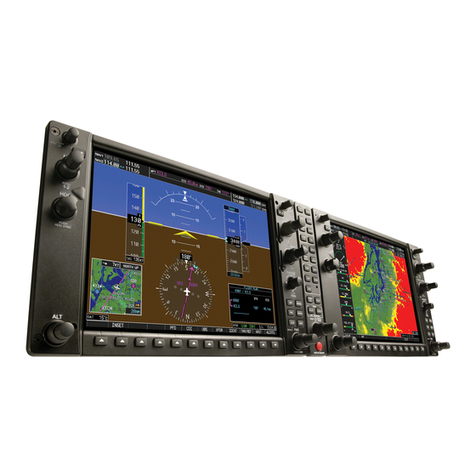
Garmin
Garmin Cessna Caravan G1000 System maintenance manual
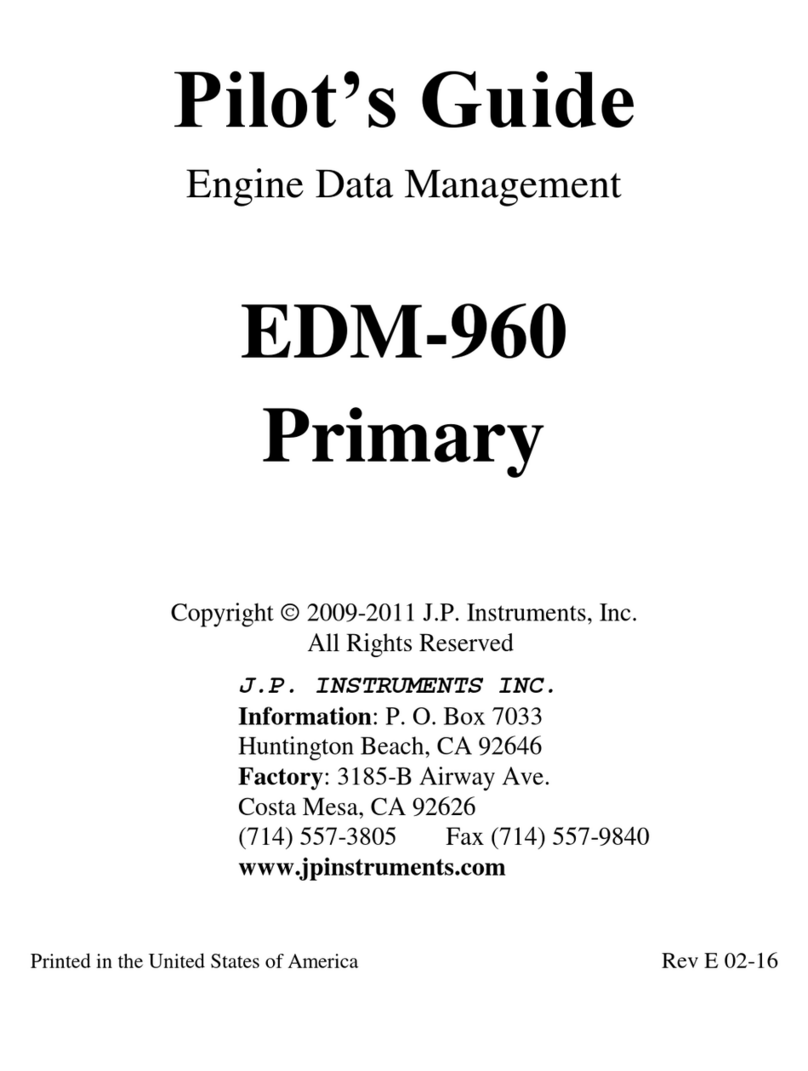
J.P. Instruments
J.P. Instruments EDM960 pilot's guide

Kelly Manufacturing
Kelly Manufacturing RC Allen Instruments RCA2610 Series Installation & operation guide
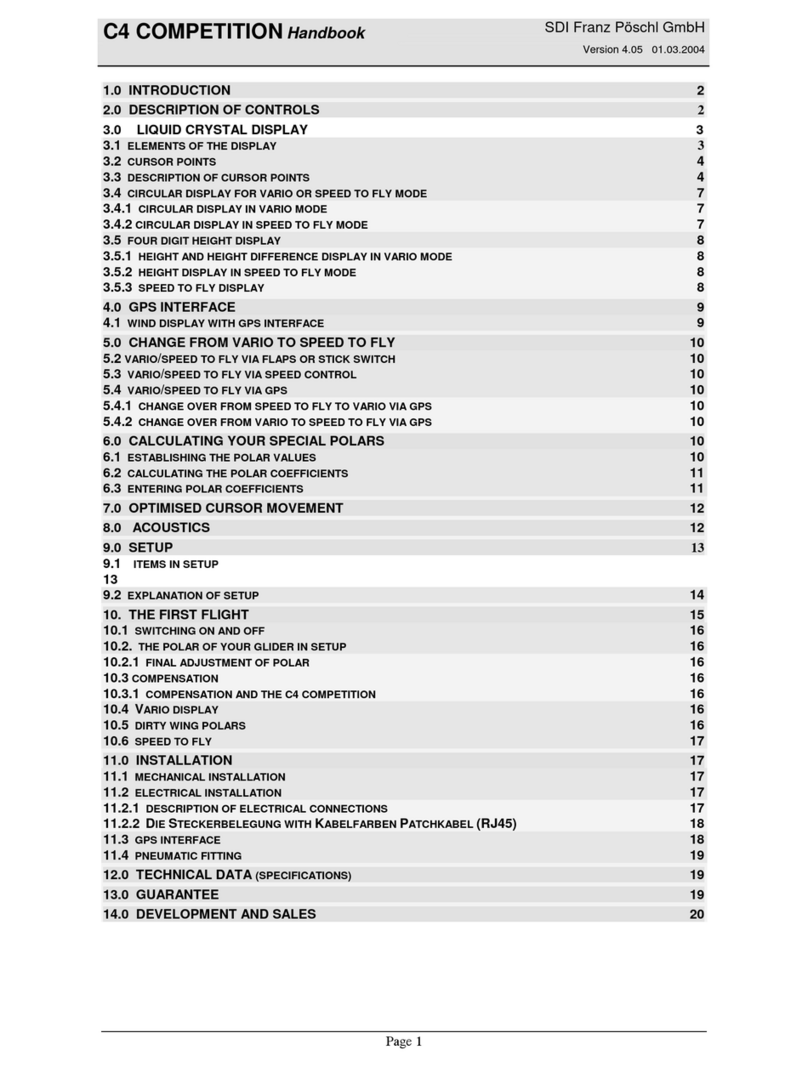
SDI
SDI C4 COMPETITION Handbook
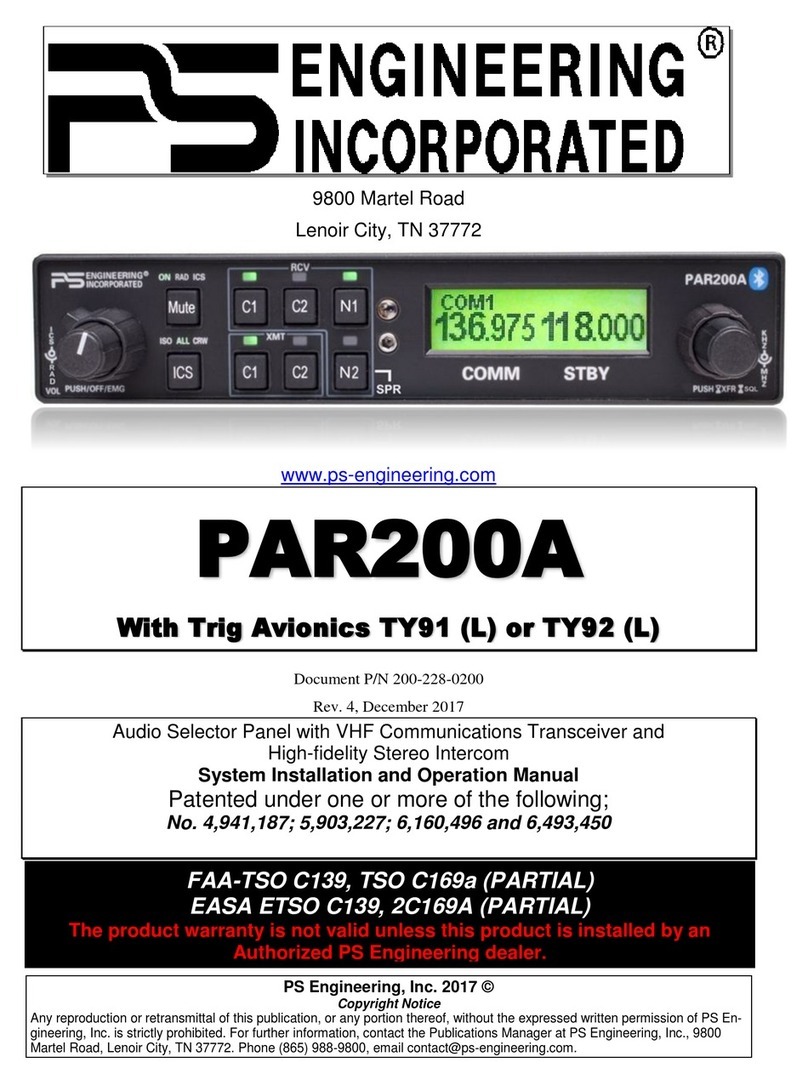
PS Engineering
PS Engineering PAR200A Installation and operation manual
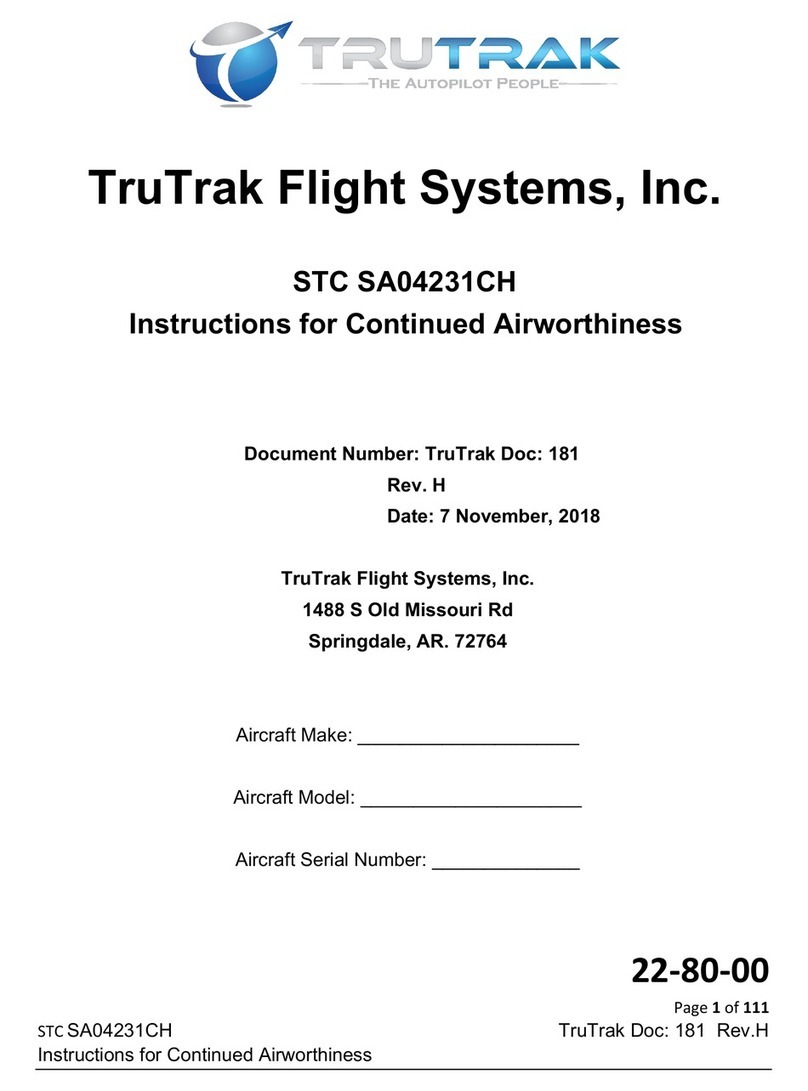
TruTrak
TruTrak STC SA04231CH Instructions for Continued Airworthiness


